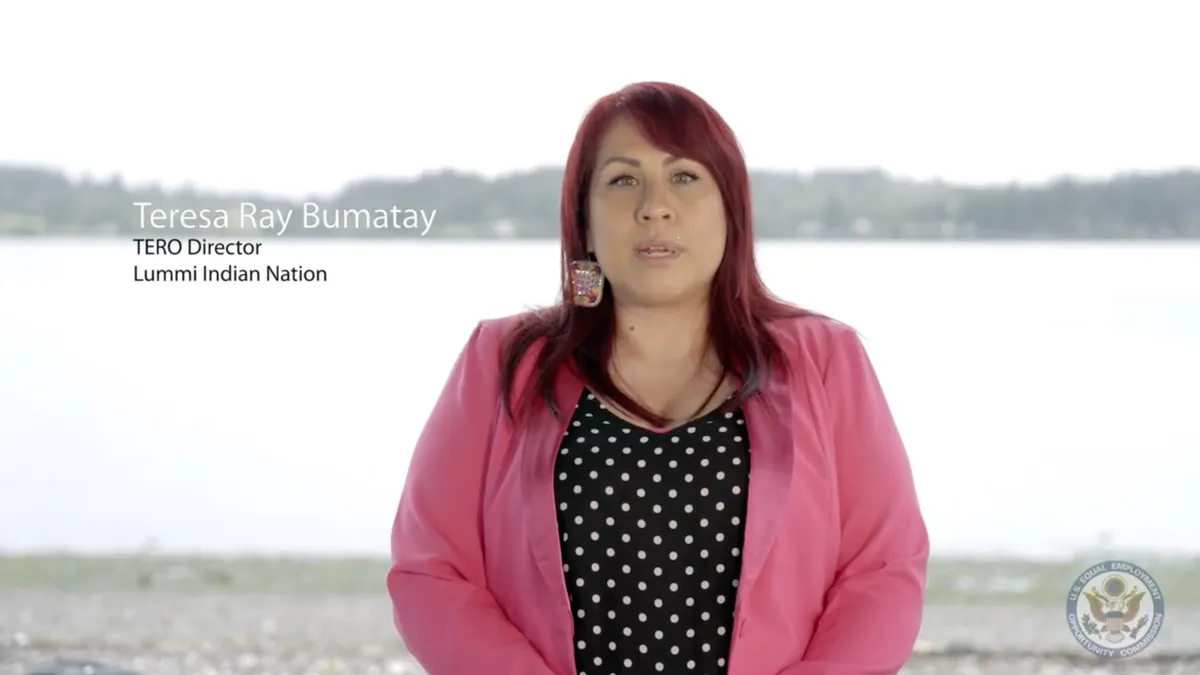If there's no change in current promotion, attrition and external hiring rates, it may take about 95 years for Black private sector employees in the U.S. to reach parity in management positions — 12% representation overall, according to McKinsey & Company.
The inaugural report Race in the Workplace: The Black Experience released Feb. 22, surveyed 24 large companies and explored geographic and systemic barriers to provide insight on why Black workers are largely concentrated in frontline and entry-level jobs. This is the first comprehensive analysis of the experience of Black professionals in corporate America, according to McKinsey.
"We examined the entire U.S. private sector employment, which consists of about 225 million people who work in the private sector, of whom about 15 million are Black workers," James Manyika, chairman and director of McKinsey Global Institute and senior partner at McKinsey & Company, said during a virtual press conference Feb. 22.
"We went not only state by state, but we also examined the roughly 3,149 counties in the United States to better understand the state of the labor markets in each of those counties, and to try and understand what representation participation looks like across those counties," Manyika said. Almost 60% of the Black labor force live in Southern states, he said. "In fact, they live in about 10 states, [in the South]" he added. Texas, Florida, Georgia, and North Carolina account for approximately 30% of Black workers, according to the report.
"It's going to be quite important to think about, how do we make sure that the private sector is tapping into talent opportunities where most of the Black workers actually are?" Manyika said.
But Black workers, overall, are not living in the places where job growth will likely rise the quickest through 2030, the report found. The West and Pacific account for 8.8% representation of Black workers, but many cities in this geographical area, such as in Provo, Utah, are seeing increasing job growth, according to the report.
"Roughly one in 10 Black workers live in the counties with the highest projected job growth," Manyika said.
Researchers also found that along with Black workers being overrepresented in low-job growth geographies, they are overrepresented in frontline jobs. About 45% of Black private-sector employees work in industries that have a large frontline or essential worker presence, including accommodation and food service, healthcare and retail. Almost half (43%) of Black private-sector workers earn less than $30,000 per year, in comparison to 29% of the rest of the private sector, the report found. Transportation is the highest-paying industry for Black workers in at least 21 states, according to the report.
Black workers are also underrepresented in many of the fast-growing, high-wage industries, such as financial services, professional services, and IT, according to Manyika. In looking at the future of work, "the occupations that are most likely going to be impacted the most by AI and automation in the coming years, happen to also be many of the occupations where there's a disproportionate representation of Black workers," he said.
The research was completed in collaboration with Walmart, the W.K. Kellogg Foundation, PolicyLink and the McKinsey Institute for Black Economic Mobility, according to the firm. Researchers analyzed data from the Bureau of Labor Statistics, the U.S. Equal Employment Opportunity Commission EEO-1 data and the U.S. Census, Manyika said.
Workplace experience
In addition to the geographical research element, the report also focused on experiences of Black employees in the workplace.
More than 25,000 employees of different races and backgrounds described their workplace experiences, Lareina Yee, chief diversity, equity and inclusion officer and senior partner at McKinsey & Company, said during the press conference.
When taking a look at the overall talent pipeline for Black employees, "unfortunately, while we have actually pretty good progress and representation in frontline, hourly and salaried workers and entry level into companies, that doesn't sustain," Yee said. "What happens is that we lose Black workers and employees and talent quickly, and we certainly don't advance them."
Based on the participating company data, Black employees make up 14% of all workers, compared with 12% for the U.S. private sector, overall, according to the report. Black representation of the workforce declines to 7% at the managerial level. Across the senior manager, vice president and senior vice president levels, Black representation is at 4% to 5%, the report found.
While overall representation of Black employees in managerial and leadership roles at companies is lacking, "when we looked at gender, we did actually see a fairly healthy representation of Black women who are leaders in their relative organizations," Yee said.
But there remains a vast underrepresentation of Black individuals at the CEO level. "If we were to see representation at the level of population parity, and [Black individuals] represent 12% of our population today, we would go from the three CEOs that we have today in Fortune 500 companies to 60," Yee said. "Certainly it would be a significant step forward to see 60 Black CEOs, and more importantly, in order to see 60 Black CEOs, you'd have to believe that in the executive levels and leadership levels, you start to see more Black talent."
Many Black employees perceive their workplace as less accepting, authentic and fair, according to the report. "Black employees are 23% less likely to receive ‘a lot' or ‘quite a bit' of support to advance, 41% less likely to view promotions as fair and 39% less likely to believe their company's [diversity, equity and inclusion (DEI)] programs are effective than White employees in the same company," the report found.
In addition, "we've seen a lack of support for sponsorship and allyship," Lee said. "First of all, we know that sponsorship takes it a distance further," she explained. "So it's not just the informal connections and the role modeling, but actually opening up opportunities; and allyship we know is important because that's when you stand up and speak up for those who are different from you."
Sponsorship and allyship are a "critical component of the work experience, especially to ward off the higher attrition [rates] that we see for Black employees" and to provide opportunities for advancement, Lee said. "And so most companies say that they have a sponsorship program, a formal one, but only 33% of Black employees report having one or more sponsors."
Walmart, a partner in the creation of the study, is the largest employer in the country, which includes a workforce of approximately 300,000 Black associates, Amy Goldfinger, senior vice president of global talent at Walmart, said during the press conference. "We recognize that the issues are complex and systemic," Goldfinger said. "We're committed to playing a leadership role to accelerate racial equity while partnering with others to drive the challenges before us."
If the major barriers that hold back the advancement of Black employees are addressed, it may cut the duration to reach parity from 95 years to about 25 years, according to the report. Research has also shown that among the challenges faced there are some "bright spots." In the coming years, faster-growing and higher-paying industries for Black employees, like transportation, may present many opportunities.
Real progress will require a "system-level change, an examination of our broader society, and active collaboration among companies and other stakeholders," according to the report.























